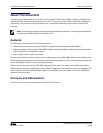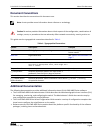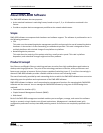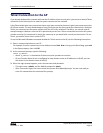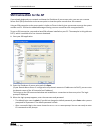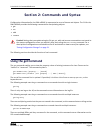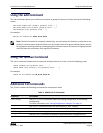
About DWS-4000 Software
D-Link Unified Wired and Wireless Access System
November 7, 2011 Page 9
D-Link UAP CLI Command Reference
About DWS-4000 Software
The DWS-4000
software has two purposes:
• Assist attached hardware in switching frames, based on Layer 2, 3, or 4 information contained in the
frames.
• Provide a complete device management portfolio to the network administrator.
Scope
DWS-4000 software encompasses both hardware and software support. The software is partitioned to run in
the following processors:
•CPU
This code runs the networking device management portfolio and controls the overall networking device
hardware. It also assists in frame forwarding, as needed and specified. This code is designed to run on
multiple platforms with minimal changes from platform to platform.
• Networking device processor
This code does the majority of the packet switching, usually at wire speed. This code is platform
dependent, and substantial changes might exist across products.
Product Concept
Fast Ethernet and Gigabit Ethernet switching continues to evolve from high-end backbone applications to
desktop switching applications. The price of the technology continues to decline, while performance and
feature sets continue to improve. Devices that are capable of switching Layers 2, 3, and 4 are increasingly in
demand. DWS-4000 software provides a flexible solution to these ever-increasing needs.
The exact functionality provided by each networking device on which the DWS-4000 software base runs varies
depending upon the platform and requirements of the DWS-4000 software.
DWS-4000 software includes a set of comprehensive management functions for managing both DWS-4000
software and the network. You can manage the DWS-4000 software by using one of the following three
methods:
• Command-Line Interface (CLI)
• Simple Network Management Protocol (SNMP)
• Web-based
Each of the DWS-4000 management methods enables you to configure, manage, and control the software
locally or remotely using in-band or out-of-band mechanisms. Management is standards-based, with
configuration parameters and a private MIB providing control for functions not completely specified in the
MIBs.









